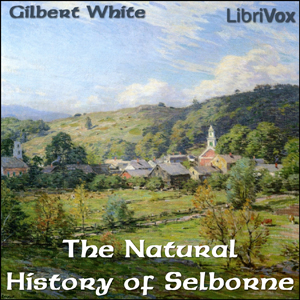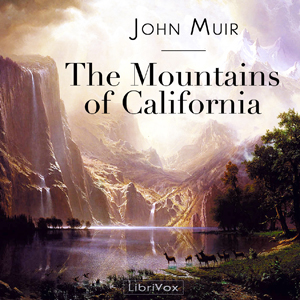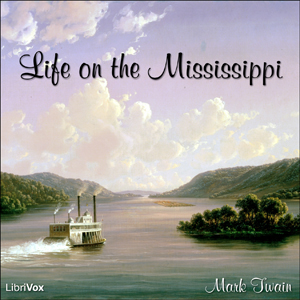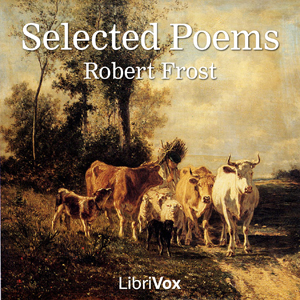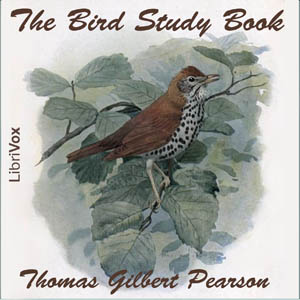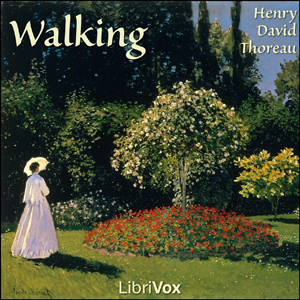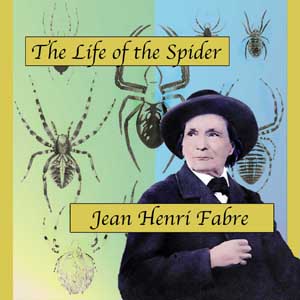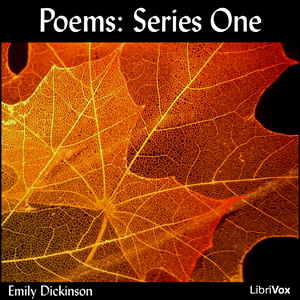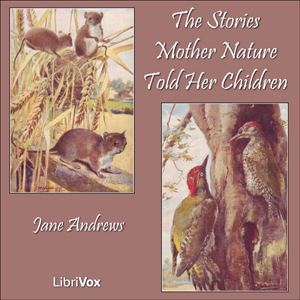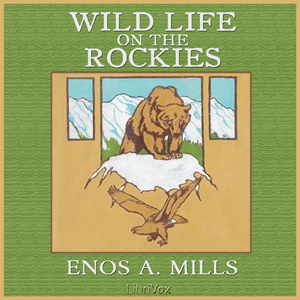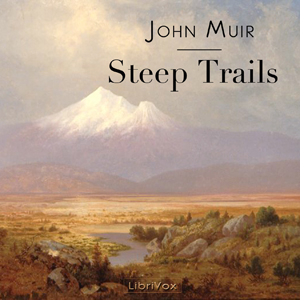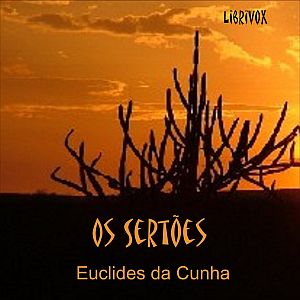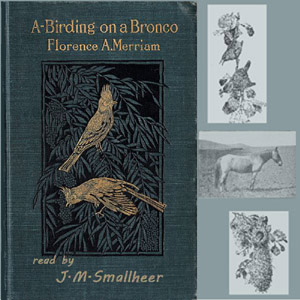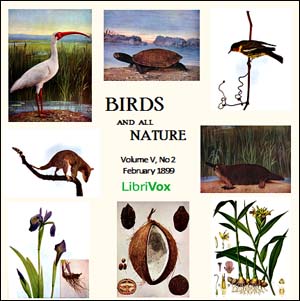California, the land of sunshine and roses, with its genial climate, its skies as blue as the far-famed skies of Venice, and its pure, life-giving air, invites the lover of nature to take long tramps over hill and dale, mountain and valley, and to search out new trails in the rugged mountains.(Quote from section 2: Brook and Waterfall).
21 episodes
This pamphlet was published in the early 20th century by the United States Rubber Company so that "coming generations of our country ... have some understanding of the importance of rubber in our every day life... We believe the rubber industry will be better off if the future citizens of our country know more about it." Learn about Christopher Columbus's discovery of rubber, how the crafty British entrepreneur, Wickham, managed to smuggle rubber seedlings out of Brazil, and how rubber manufacturing came to be a "peculiarly American industry." The myriad uses of rubber from a century ago are also elaborated in considerable detail - everything from submarines to Keds to dentures. (Summary by Judy Bieber)
1 episodes
John Muir's adventure guide for the Yosemite Valley.
25 episodes
Thomas Huxley, known as “Darwin’s Bulldog” for his championing and development of Darwinism, was perhaps the most important Victorian biologist after Darwin himself. This speech to the Metaphysical Society in 1870 is one of Huxley’s best known texts outside the sphere of his specialism, and remains read today by students of philosophy. In it, Huxley argues from the results of vivisection to metaphysics. (Summary by CarlManchester)
1 episodes
The Reverend Gilbert White was the curate of the village of Selborne, a village in Hampshire, from 1784 to his death in 1793, living most of his life in the village. The book is in the form of a collection of letters to two friends, discussing the natural history of the areas that he knew, and natural history in general. White's intense curiosity and his love for the world about him flow through his simple, straightforward style, and a gentle sense of humour colours many of his anecdotes. (Summary by Peter)
14 episodes
The Book of the Damned was the first published nonfiction work of the author Charles Fort (first edition 1919). Dealing with various types of anomalous phenomena including UFOs, strange falls of both organic and inorganic materials from the sky, odd weather patterns, the possible existence of creatures generally held to be mythological, disappearances of people under strange circumstances, and many other phenomena, the book is historically considered to be the first written in the specific field of anomalistics. - Summary from Wikipedia
28 episodes
John Muir (1838–1914) was one of the first modern preservationists. His letters, essays, and books telling of his adventures in nature, and wildlife, especially in the Sierra Nevada Mountains of California, were read by millions and are still popular today. His direct activism helped to save the Yosemite Valley and other wilderness areas. The Sierra Club, which he founded, is now one of the most important conservation organizations in the United States. His writings and philosophy strongly influenced the formation of the modern environmental movement. (Summary from Wikipedia)
19 episodes
Life on the Mississippi is a memoir by Mark Twain detailing his days as a steamboat pilot on the Mississippi River before the American Civil War. (Summary from Wikipedia)
64 episodes
Robert Frost, who lived from March 26, 1874 to January 29, 1963, was a winner of 4 Pulitzer prizes and one of America’s best loved poets. This selection of his poems is a short walk through the variety of his simplistic natural themes and complex social understandings. (Summary by Becky Miller, Canal Winchester, Ohio)
8 episodes
Do you enjoy birdwatching? Would you like to learn a little more about the early conservations efforts to protect wild birds? In the Preface to The Bird Study Book, Pearson tells us “This book was written for the consideration of that ever-increasing class of Americans who are interested in acquiring a greater familiarity with the habits and activities of wild birds. Attention is also given to the relation of birds to mankind and the effect of civilisation on the bird-life of the country. ” An avid ornithologist, T. Gilbert Pearson (1873-1943) was a co-founder in 1905 of the National Association of Audubon Societies of which he was first secretary and then president for many years. He was also a pioneer of the conservation movement in the United States, international bird protection and broad nature education for school-aged children. (Audubon Magazine. 42: 370–371. Nov-Dec 1943)
12 episodes
This was originally a lecture given by Thoreau in 1851 at the Concord lyceum titled "The Wild" . He revised it before his death and it was included as part of the June 1862 edition of Atlantic Monthly. This essay appears, on the surface, to be simply expounding the qualities of Nature and man's place therein. Through this medium he not only touches those subjects, but with the implications of such a respect for nature, or lack thereof. (Summary by Chris Masterson)
2 episodes

John Wesley Powell was a pioneer American explorer, ethnologist, and geologist in the 19th Century. In 1869 he set out to explore the Colorado and the Grand Canyon. He gathered nine men, four boats and food for ten months and set out from Green River, Wyoming, on May 24. Passing through dangerous rapids, the group passed down the Green River to its confluence with the Colorado River (then also known as the Grand River upriver from the junction), near present-day Moab, Utah.The expedition's route traveled through the Utah canyons of the Colorado River, which Powell described in his published diary as having …wonderful features—carved walls, royal arches, glens, alcove gulches, mounds and monuments. From which of these features shall we select a name? We decide to call it Glen Canyon. (Ironically, now almost completely submerged by Lake Powell, behind the Glen Canyon Dam.)One man (Goodman) quit after the first month and another three (Dunn and the Howland brothers) left at Separation Rapid in the third, only two days before the group reached the mouth of the Virgin River on August 30 after traversing almost 1,500 km. The three who left the group late in the trip were later killed—probably by Indians.Powell retraced the route in 1871-1872 with another expedition, producing photographs, an accurate map, and various papers, including ethnographic reports of the area's Native Americans and a monograph on their languages. --adapted from Wikipedia
16 episodes
Jean-Henri Casimir Fabre was a French entomologist and author. He was born in St. Léons in Aveyron, France. Fabre was largely an autodidact, owing to the poverty of his family. Nevertheless, he acquired a primary teaching certificate at the young age of 19 and began teaching at the college of Ajaccio, Corsica, called Carpentras. In 1852, he taught at the lycée in Avignon. (Summary from Wikipedia)
17 episodes

A collection of ten short nonfiction works in the public domain. The essays, speeches, news items and reports included in this collection were independently selected by the readers, and the topics encompass history, politics, philosophy, nature and religion. Included in this collection are “The Emanicpation Proclamation” and Second Inaugural Address of Abraham Lincoln, “Prinicpal Doctrines” by Epicurus, “Fox and Hound” and the preface to “The Breath of Life” both by John Burroughs, “The Wentworth Letter” by Joseph Smith, and “The Rhythm of Life” by Alice Meynell. From the New York Times, April 10, 1817 is an account of the Canadian capture of Vimy Ridge, “Haig Strikes Near Arras” and from the September 1921 issue of Vanity Fair an article on “The Flapper - A New Type.” And for the those with more than a passing in the history of railways/roads, the “Report of the Railway Department of the Board of Trade” from February 1845 which impacted the ‘gauge wars’ of the mid-nineteenth century in England wraps up the list! (summary by J. M. Smallheer)
10 episodes
A collection of fifteen short nonfiction works in the public domain. The essays, speeches and reports included in this collection were independently selected by the readers, and the topics encompass history, politics, medicine, nature and religion. Included in this collection are speeches by George Washington and Abraham Lincoln, Martin Luther's Ninety-five Theses, several interesting or historic articles from Vanity Fair and the NY times, as well as writings of Eugene Debs, Alexander von Humboldt, Lena Morrow Lewis, Joseph Lister and C. M. Ellis. (summary by J. M. Smallheer)
15 episodes
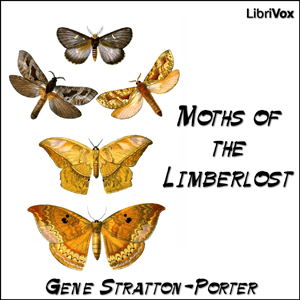
Gene Stratton-Porter (August 17, 1863 - December 6, 1924) was an American author, amateur naturalist, wildlife photographer, specializing in the birds and moths in one of the last of the vanishing wetlands of the lower Great Lakes Basin. The Limberlost and Wildflower Woods of northeastern Indiana were the laboratory and inspiration for her stories, novels, essays, photography, and movies. She was an accomplished author, artist and photographer and is generally considered to be one of the first female authors to promulgate public positions; conserving the Limberlost Swamp in her case. Although Stratton-Porter wanted to focus on nature books, it was her romantic novels that made her famous and generated the finances that allowed her to pursue her nature studies. In Moths of the Limberlost, she shares her lifelong love of the moths she describes through a series of charming anecdotes and wonderfully descriptive passages, providing vivid detail of each stage of their life cycles. (Summary adapted from wikipedia and expanded by J. M. Smallheer)
15 episodes
Arabella Buckley had a great love of nature and wished to impart that love to children. Birds of the Air will encourage children to observe birds in their natural environment and notice the habits of each particular bird they encounter. (Summary by Laura Caldwell)
16 episodes
Renowned poet Emily Dickinson (1830 - 1886) wrote many many poems. This collection, "Poems: Series One", presents the first installment of the complete poetic works of Miss Emily Dickinson. It is broken into four parts: Life, Love, Nature, and Time and Eternity.The verses of Emily Dickinson belong emphatically to what Emerson long since called "the Poetry of the Portfolio,"--something produced absolutely without the thought of publication, and solely by way of expression of the writer's own mind. The poetry found here is then entirely honest, and indicative of the authors true feelings. (Summary by Shurtagal and Thomas Wentworth Higginson)
5 episodes
"You may think that Mother Nature, like the famous "old woman who lived in the shoe," has so many children that she doesn't know what to do. But you will know better when you become acquainted with her, and learn how strong she is, and how active; how she can really be in fifty places at once, taking care of a sick tree, or a baby flower just born; and, at the same time, building underground palaces, guiding the steps of little travellers setting out on long journeys, and sweeping, dusting, and arranging her great house,--the earth. And all the while, in the midst of her patient and never-ending work, she will tell us the most charming and marvellous stories of ages ago when she was young, or of the treasures that lie hidden in the most distant and secret closets of her palace; just such stories as you all like so well to hear your mother tell when you gather round her in the twilight." (Summary from Chapter One of The Stories Mother Nature Told Her Children)
14 episodes
Nature Near Home is one of many books on natural history by John Burroughs. It is full of simple observations about rural scenes and charming stories about animals, plants, and even people! Burroughs loves the creatures around him and derives great pleasure from his walks and studies in nature’s scenes. (Summary by Edith Phern)
13 episodes
The journal of nature-lover John Muir who spent the summer of 1869 walking California’s Sierra Nevada range. From French Bar to Mono Lake and the Yosemite Valley, Muir was awestruck by everything he saw. The antics of the smallest “insect people” amazed him as much as stunted thousand-year old Juniper trees growing with inconceivable tenacity from tiny cracks in the stone. Muir spent the rest of his life working to preserve the high Sierra, believing that “the clearest way into the Universe is through a forest wilderness.” John Muir (1838-1914) was born in Dunbar, Scotland and grew up in Wisconsin, USA. This recording commemorates the 140th anniversary of that first summer. (Summary by Adrian Praetzellis)
15 episodes
Delightful sketches of British wild birds - a bird for every month of the year from the pheasant in January to the robin in December. This collection of articles, reprinted in book form from the periodical The Outlook, is full of fascinating information about bird behaviour and habitat, as well as many interesting anecdotes. (Summary by Ruth Golding)
12 episodes
"This book contains the record of a few of the many happy days and novel experiences which I have had in the wilds. For more than twenty years it has been my good fortune to live most of the time with nature, on the mountains of the West. I have made scores of long exploring rambles over the mountains in every season of the year, a nature-lover charmed with the birds and the trees. On my later excursions I have gone alone and without firearms. During three succeeding winters, in which I was a Government Experiment Officer and called the "State Snow Observer," I scaled many of the higher peaks of the Rockies and made many studies on the upper slopes of these mountains." (Summary from the Preface of Wild Life on the Rockies)
15 episodes
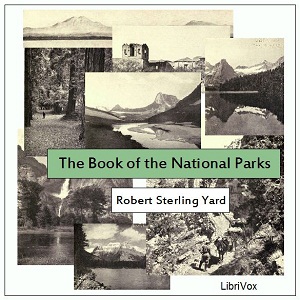
Robert Sterling Yard was an American writer, journalist, and wilderness activist. Born in Haverstraw, New York, Yard graduated from Princeton University and spent the first twenty years of his career in the editing and publishing business. In 1915, he was recruited by his friend Stephen Mather to help publicize the need for an independent national park agency. Their numerous publications were part of a movement that resulted in legislative support for a National Park Service (NPS) in 1916. Yard worked to promote the national parks as well as educate Americans about their use. Creating high standards based on aesthetic ideals for park selection, he also opposed commercialism and industrialization of what he called "America's masterpieces". In 1935, he became one of the eight founding members of The Wilderness Society and acted as its first president from 1937 until his death eight years later. Yard is now considered an important figure in the modern wilderness movement.In the preface to this book, published in 1919, he writes, "In offering the American public a carefully studied outline of its national park system, I have two principal objects. The one is to describe and differentiate the national parks in a manner which will enable the reader to appreciate their importance, scope, meaning, beauty, manifold uses and enormous value to individual and nation. The other is to use these parks, in which Nature is writing in large plain lines the story of America's making, as examples illustrating the several kinds of scenery, and what each kind means in terms of world building; in other words, to translate the practical findings of science into unscientific phrase for the reader's increased profit and pleasure, not only in his national parks but in all other scenic places great and small." (summary from wikipedia)
30 episodes

Naturalis Historia (Latin for "Natural History") is an encyclopedia published circa AD 77-79 by Pliny the Elder. It is one of the largest single works to have survived from the Roman empire to the modern day and purports to cover the entire field of ancient knowledge, based on the best authorities available to Pliny. The work became a model for all later encyclopedias in terms of the breadth of subject matter examined, the need to reference original authors, and a comprehensive index list of the contents. The scheme of his great work is vast and comprehensive, being nothing short of an encyclopedia of learning and of art so far as they are connected with nature or draw their materials from nature. The work divides neatly into the organic world of plants and animals, and the realm of inorganic matter, although there are frequent digressions in each section. He is especially interested in not just describing the occurrence of plants, animals and insects, but also their exploitation (or abuse) by man, especially Romans. The description of metals and minerals is particularly detailed, and valuable for the history of science as being the most extensive compilation still available from the ancient world. (Summary from Wikipedia)This volume one includes the first five books, covering the following subjects:
Book 1- DedicationBook 2 - An account of the world and the elementsBooks 3 to 5 - An account of countries, nations, seas, towns, havens, mountains, rivers, distances, and peoples who now exist or formerly existed
35 episodes
A collection of Muir's previously unpublished essays, released shortly after his death. "This volume will meet, in every way, the high expectations of Muir's readers. The recital of his experiences during a stormy night on the summit of Mount Shasta will take rank among the most thrilling of his records of adventure. His observations on the dead towns of Nevada, and on the Indians gathering their harvest of pine nuts, recall a phase of Western life that has left few traces in American literature. ... The landscapes that Muir saw ... will live in good part only in his writings, for fire, axe, plough, and gunpowder have made away with the supposedly boundless forest wildernesses and their teeming life." (From the Editor's note to the 1918 first edition)
25 episodes
This is not a manual of instruction for orchid growers; though there are many hints on cultivation, and a few paragraphs on how to hybridize. The author is just an enthusiastic amateur orchid lover. He takes the reader on a wander through the dangers and consequences of hunting orchids in the tropical jungles of the nineteenth century, and chats about the extreme peculiarities of orchid growth, behaviour and structure, colouring the essays with his own experiences and with his delight in cultivating these beautiful plants. Beware! A new hobby beckons! (Summary by Peter Yearsley)
15 episodes
LibriVox volunteers bring you 20 recordings of Winter by Robert Louis Stevenson. This was the Weekly Poetry project for November 22nd, 2009.
20 episodes
LibriVox volunteers bring you 21 recordings of Snow-Flakes by Henry Wadsworth Longfellow. This was the Weekly Poetry project for December 20th, 2009.
21 episodes
Os Sertões é um livro brasileiro, escrito por Euclides da Cunha e publicado em 1902. Trata da Guerra de Canudos (1896-1897), no interior da Bahia. Euclides da Cunha tinha presenciado uma parte desta guerra como correspondente do jornal O Estado de S. Paulo, e ao retornar escreveu um dos maiores livros já escritos por um brasileiro. Pertence, ao mesmo tempo, à prosa científica e à prosa artística. Pode ser entendido como um obra de Sociologia, Geografia, História ou crítica humana. Mas não é errado lê-lo como uma epopéia da vida sertaneja em sua luta diária contra a paisagem e a incompreensão das elites governamentais.(Sumário extraído da Wikipédia)
49 episodes
The first half of this book describes the devastating earthquake that hit San Francisco in 1906, and the subsequent destruction caused by fire. Various eyewitnesses and victims give their account on the tragedy.
In the second half, a number of different other earthquakes and volcanic eruptions are retold, like the eruption of the Vesuvius that destroyed Pompeij or the explosion of the Krakatoa, together with scientific explanations for the causes of earthquakes and the eruption of volcanos. (Summary by Availle)
33 episodes

Naturalis Historia (Latin for "Natural History") is an encyclopedia published circa AD 77-79 by Pliny the Elder. It is one of the largest single works to have survived from the Roman empire to the modern day and purports to cover the entire field of ancient knowledge, based on the best authorities available to Pliny. The work became a model for all later encyclopedias in terms of the breadth of subject matter examined, the need to reference original authors, and a comprehensive index list of the contents. The scheme of his great work is vast and comprehensive, being nothing short of an encyclopedia of learning and of art so far as they are connected with nature or draw their materials from nature. The work divides neatly into the organic world of plants and animals, and the realm of inorganic matter, although there are frequent digressions in each section. He is especially interested in not just describing the occurrence of plants, animals and insects, but also their exploitation (or abuse) by man, especially Romans. The description of metals and minerals is particularly detailed, and valuable for the history of science as being the most extensive compilation still available from the ancient world. (Summary from Wikipedia)This second volume includes books six to ten, covering the following subjects:Book 6 - An account of countries, nations, seas, towns, havens, mountains, rivers, distances, and peoples who now exist or formerly existedBook 7 - Man, his birth, his organization and the invention of the artsBook 8 - The nature of the terrestrial animalsBook 9 - The natural history of fishesBook 10 - The natural history of birds
42 episodes
Florence Augusta Merriam Bailey was an American ornithologist and nature writer. She started observing bird behavior at a time when most bird study was based on collections and skins. By 1885, she began to write articles focusing on protecting birds. Her introduction of a birdwatching field guide, aimed at living birds, is considered the first in the tradition of modern bird guides. She wrote the first of these at the age of 26, initially as a series of notes in the Audubon Magazine and later as books. In "A-Birding on a Bronco," she writes an engaging memoir about her several trips to study birds on a ranch in California in the late 1800's.
19 episodes
In seiner 1880 erschienenen Anleitung zur Zimmer-Gärtnerei gibt Max Alfred Jubisch leicht verständliche Ratschläge zur richtigen Aufstellung, Pflege und Vermehrung von Zimmerpflanzen. Dabei geht er auch auf die zu dieser Zeit erst in Mode gekommenen Terrarien und Aquarien ein.
Wer nicht sofort zur Bekämpfung von Pflanzenkrankheiten die Chemiekeule schwingen will, wird hier sicherlich einige gute Tipps finden. Und wer einfach nur wissen will, wie es anno 1880 in Deutschen (Blumen)-Zimmern ausgesehen haben mag, wird hier sicherlich auch einen kleinen Einblick bekommen.
Auf den fünften Abschnitt der Druckausgabe wurde in diesem Hörbuch verzichtet, da es sich im Wesentlichen nur um eine Aufzählung lateinischer Blumennamen handelt. (Zusammenfassung von Wassermann)
9 episodes
The Chemical History of a Candle is a series of 6 lectures on chemistry presented to a juvenile audience in 1848. Taught by Michael Faraday - a chemist and physist, and regarded as the best experimentalist in the history of science - it is probably the most famous of the Christmas Lectures of the Royal Society.
Taking the everyday burning of a candle as a starting point, Faraday spans the arc from combustion and its products, via the components of water and air (oxygen, hydrogen, nitrogen, carbon), back to the type of combustion that happens in the human body when we breathe.
The final lecture "On Platinum" describes a then new method to produce large quantities of Platinum. It was delivered before the Royal Institution on February 22, 1861. (Summary by Availle.)
8 episodes
The Woodpeckers is a wonderful introduction to the world of bird study for the young naturalist, covering such topics as how he finds food, courting, how he builds his nest, the interesting ways he uses his different body parts as tools, among other topics discussed in the book.If you wish to investigate further, the online text has a few diagrams and an Appendix that contains more technical information such as detailed descriptions of the different species of North American woodpeckers which were not read as part of this audiobook.
(summary by Laura Victoria)
17 episodes

Located in a part of Cumbria that was once part of Lancashire, the River Duddon rises in the high fells of the Lake District and flows for 25 miles through varied scenery before disappearing into the sands between Millom and Barrow-in-Furness. Wordsworth’s series of sonnets, inspired by his walks along the river, were written over a period of years, but are arranged so as to follow its downward course from the fells to the sea. Part One of this reading consists of the 33 sonnets and postscript that were first published as a series in 1820. Later editions of Wordsworth’s works included a 34th sonnet, which is appended to Part One. Part Two contains Wordsworth’s rather eccentric notes on the sonnets, which are largely taken up by an account of the remarkable career of the Reverend ‘Wonderful’ Walker, who lived to the age of 94 after serving as curate of Seathwaite chapel for 67 years from 1735 to 1802. I have read the sonnets using a northern English accent as I believe Wordsworth may have read them himself. (Summary by Phil Benson)
2 episodes
National Geographic Magazine Volume 1 Number 1 published in 1889. Topics of articles are:
Announcement by the National Geographic Society
Introductory Address by the President
Geographic Methods in Geologic Investigation
Classification of Geographic Forms by Genesis
The Great Storm of March 11 to 14, 1888
The Great Storm off the Atlantic Coast of the United States, March 11th to 14th, 1888
The Survey of the Coast
The Survey and Map of Massachusetts
(Summary by Guero)
10 episodes
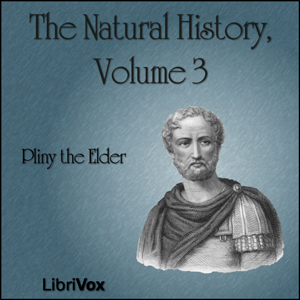
Naturalis Historia (Latin for "Natural History") is an encyclopedia published circa AD 77-79 by Pliny the Elder. It is one of the largest single works to have survived from the Roman empire to the modern day and purports to cover the entire field of ancient knowledge, based on the best authorities available to Pliny. The work became a model for all later encyclopedias in terms of the breadth of subject matter examined, the need to reference original authors, and a comprehensive index list of the contents. The scheme of his great work is vast and comprehensive, being nothing short of an encyclopedia of learning and of art so far as they are connected with nature or draw their materials from nature. The work divides neatly into the organic world of plants and animals, and the realm of inorganic matter, although there are frequent digressions in each section. He is especially interested in not just describing the occurrence of plants, animals and insects, but also their exploitation (or abuse) by man, especially Romans. The description of metals and minerals is particularly detailed, and valuable for the history of science as being the most extensive compilation still available from the ancient world. (Summary from Wikipedia)This third volume includes books eleven to fifteen, covering the following subjects:Book 11 - The various kinds of insectsBook 12 - The natural history of treesBook 13 - The natural history of exotic trees and an account of unguentsBook 14 - The natural history of the fruit treesBook 15 - The natural history of the fruit trees
26 episodes
National Geographic Magazine Volume 1 Number 2 published in 1889. Topics of articles are:
Africa, its Past and Future
Reports on:
Geography of the Land
Geography of the Sea
Geography of the Air
Geography of Life
(Summary by Guero)
8 episodes
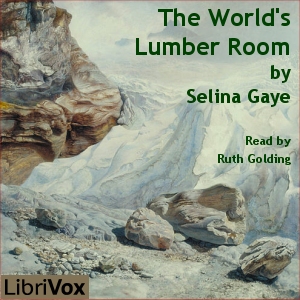
If this book were written today, it would be called "The Story of the World's Rubbish".That may not sound a promising subject for a book, but we are taken on a journey all over the world (and beyond) to explain the many varieties of dust and refuse - animal, vegetable and mineral - how it is made both by man and by nature, what happens to it, and why we need it. We find that recycling is nothing new: man has been doing it for centuries, and nature has been doing it for billions of years. As every schoolboy knows, 'matter is neither created nor destroyed', so it stands to reason that every particle of it must be somewhere.This study of our knowledge of the earth was written for the layman before most of the -ologies were even a twinkle in a professor's eye. Geology, meteorology, hydrology, biology, glaciology and even sociology and anthropology all have their place in this readable and enjoyable tour of the earth's 'lumber room'.Though some of the science is out of date - it was written, for instance, 80 years before the theory of plate tectonics was understood - the author admits candidly when the science of the day does not yet provide answers to some questions. The almost contemporary description of the eruption of Krakatoa still resonates with us - compare the effect on our modern world of Mount St. Helens and Eyjafjallajökull in recent decades.Miss Gaye shows that far from everything in nature's lumber room being rubbish, every speck of dust has a purpose. The dust-cart (garbage truck) will never look the same to you again. (Summary by Ruth Golding)
19 episodes
The value of the honey bee in cross pollinating the flowers of fruit trees makes it desirable that exact information be available concerning the actions of the bee when gathering and manipulating the pollen. The results recorded in this manuscript are also of value as studies in the behavior of the bee and will prove interesting and valuable to the bee keeper. The work here recorded was done by Dr. Casteel during the summers of 1911 and 1912. (Summary from introduction of manuscript)
10 episodes
The famed French naturalist Fabre covers a large variety of subjects in these 70 short but fascinating essays about insects, animals and nature in general. The translator explains in her foreword, "The young in heart and the pure in heart of whatever age will find themselves drawn to this incomparable story-teller, this reverent reveler of the awe-inspiring secrets of nature. The identity of the "Uncle Paul," who in this book and others of the series plays the story-teller's part, is not hard to guess; and the young people who gather about him to listen to his true stories from wood and field, from brook and hilltop, from distant ocean and adjacent millpond, are, without doubt, the author's own children, in whose companionship he delighted and whose education he conducted with wise solicitude." (Summary by Phil Chenevert)
80 episodes

The 18th century book A Treatise on Modern Falconry is still one of the most quoted books in today's falconry community. The preface was possibly written by a Rev. A. Willis, ridicules "The Origin and Progress of Language," a publication shortly before his writing this book. The introduction to this book gives a historical account of the development of falconry from its beginnings long before the 9th century in the middle East to its apparent decline at the invention of the hunting gun. It also includes interesting facts about the practice of falconry in Persia and Hindostan, where falconry became (and in some parts of the Middle East still is) a sport and pastime of the upper classes. In the second and main part, the book talks about the falconer and his instruments as well as how to treat and train his birds. The book introduces methods of training and handling falcons, hawks and other birds of prey, and also includes sections about their diseases and possible injuries.(Summary by Curt Walton.)
10 episodes
George Washington Sears, who many know better by his pen name "Nessmuk", was an outdoor writer during the last half of the 19th century, writing most often for the magazine "Field and Forest", the predecessor of today's "Field and Stream". "Woodcraft" is his book for "outers" with his tips on how to "smooth it" rather than rough it in the woods. Although some of his methods, equipment and mores may be out of date or objectionable to modern readers, his stories of true wilderness travel tinged with his subtle humor still have messages for those venturing out of doors. His small stature and compromised health made him a proponent of lightweight backpacking and canoe travel with only essential gear, a lesson still relevant today. There is a reason why "Woodcraft" and the slightly abridged, "Woodcraft and Camping", have been continuously in print since its original publication. - Summary by Fritz
10 episodes

In 1911, decades before California's coast Highway 1 was built, an Englishman rode 2000 miles on horseback the length of California, from Mexico to Oregon. On the way he is courteously received at isolated ranches, has many quiet adventures, and is generally amazed by the beauty of our coast. A classic early California travelog. Chase was born in Islington (London) and but lived most of this life in the California desert.Here are Chase's major landmarks, first going south and then turning north:Chap. 1 El Monte to Laguna Beach. Chap. 2 Aliso Canyon to San Juan Capistrano. Chap. 3 San Juan hot springs (east of Mission Viejo) to Oceanside. Chap 4. Del Mar to San Diego. Chap. 5 San Fernando Valley to Malibu. Chap. 6 Boney Mountain (in the Santa Monica Mtns.) to Ventura. Chap. 7 Carpenteria to Santa Barbara. Chap 8. Refugio Pass (south of Solvang) to Lompoc. Chap. 9 Solvang to Las Cruces (south of Solvang). Chap. 10 Point Conception back to Lompoc. Chap. 11 Casmalia to Avila (on SLO Bay). Chap. 12 San Luis Obispo to Morro Bay. Chap. 13 to Jolon and Mission San Antonio de Padua (SE of Ft. Hunter Liggett). Chap. 14 to Pacific Valley (south of Limekiln State Park). Chap. 15 Limekiln, Lucia, to about Lopez Point. Chap. 16 Big Sur, Point Sur Lighthouse to Monterey. Chap. 17 Seaside through the Santa Cruz Mtns. to Pescadero (San Mateo Co.). Chap. 18 Half Moon Bay, San Francisco, to Drakes Bay. Chap. 19 Tomales Bay to Gualala. Chap. 20 Navarro to Westport. Chap. 21 King Range and the Mattole Valley to Eureka. Chap. 22 Arcata to the Klamath.(Summary by Adrian Praetzellis)
22 episodes
"Birds and All Nature" was a monthly publication of the Nature Study Publishing Company of Chicago. It includes short poems and brief descriptions of birds, animals and other natural subjects with accompanying color plates. The magazine was published from 1897-1907 under the various titles, "Birds," "Birds and all Nature," "Nature and Art" and "Birds and Nature." These short pieces are pleasant listening for anyone with a love of nature. - Summary by J. M. Smallheer
"In those vernal seasons of the year, when the air is calm and pleasant, it were an injury and sullenness against Nature not to go out and see her riches and partake in her rejoicing with heaven and earth." —Milton.
21 episodes
Sketching from Nature, Equipment, Colour, Composition, Trees, Skies, Grass, Reflections, Distance -- chapters rich with timeless oil painting advice by a master landscape artist, Sir Alfred East. East had an exceptional ability to capture the individuality of trees, the quiver of their leaves against the sky. “If we look at a photograph, the edges of the trees do not give you the feeling that the tree is a living thing, they are marked with hard precision against the light, like a solid building, and yet at the same time if we see them in Nature we hear the whisper of their leaves and know that they live and breathe. To express that is a greater truth than the camera can reveal, and a higher form of realism.” East served as president of the Royal Society of British Artists from 1906 to 1913. - Summary by Sue Anderson
14 episodes
"Is it true that a bee can only sting once?" I asked him, as he bent again over the crocus beds.
He laughed.
"What would be the good of a sword to a soldier," he said, "if only one blow could be struck with it? It is certainly true that the bee does not usually sting a second time, but that is only because you are too hasty with her. ...But now watch how the thing works naturally."
A bee had settled on his hand as he was speaking. He closed his fingers gently over it, and forced it to sting.
"Now," he continued, quite unconcernedly, "look what really happens..." (from The Bee-Master of Warrilow)
The Bee-Master of Warrilow, steeped from his earliest years in the lore of his bee-keeping forefathers, is a guardian of the English bee-garden life and of the fascinating creature that is the honey bee. (Summary by Steve C)
32 episodes
"Birds and All Nature" was a monthly publication of the Nature Study Publishing Company of Chicago. It includes short poems and brief descriptions of birds, animals and other natural subjects with accompanying color plates. The magazine was published from 1897-1907 under the various titles, "Birds," "Birds and all Nature," "Nature and Art" and "Birds and Nature." - Summary by J. M. Smallheer"England holds the honor of having first formed societies for the prevention of cruelty to animals and of having first legislated for its punishment." -anon
24 episodes



